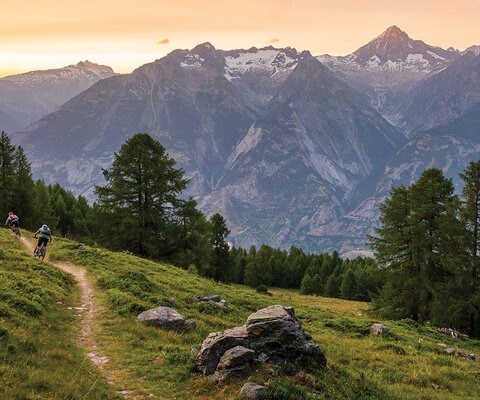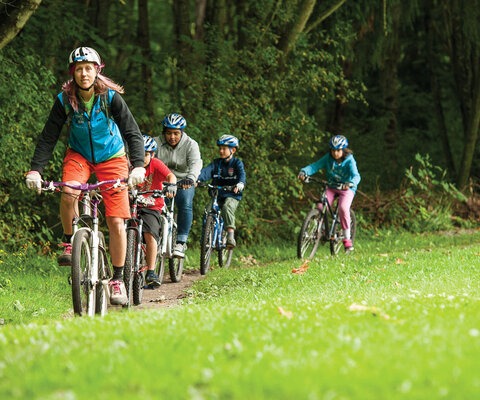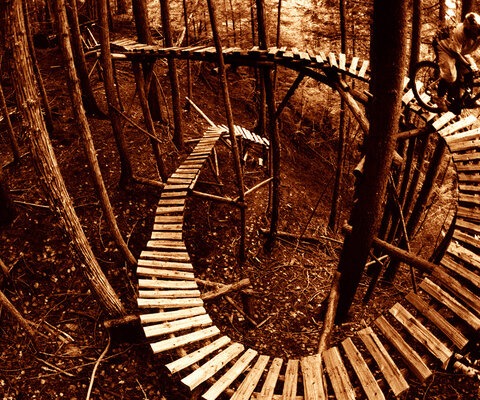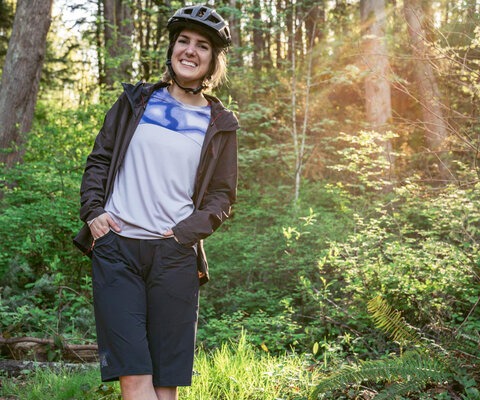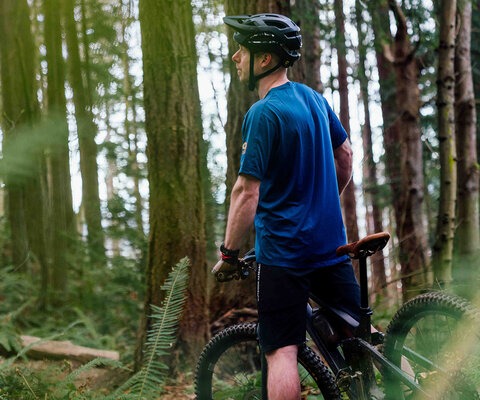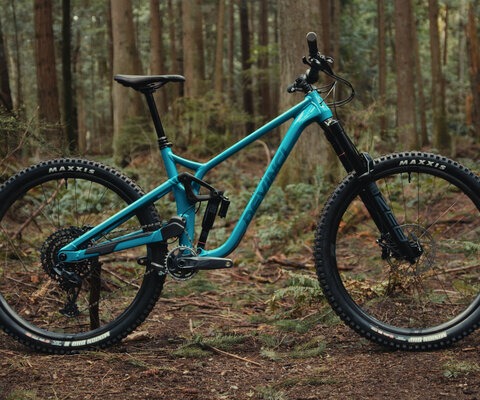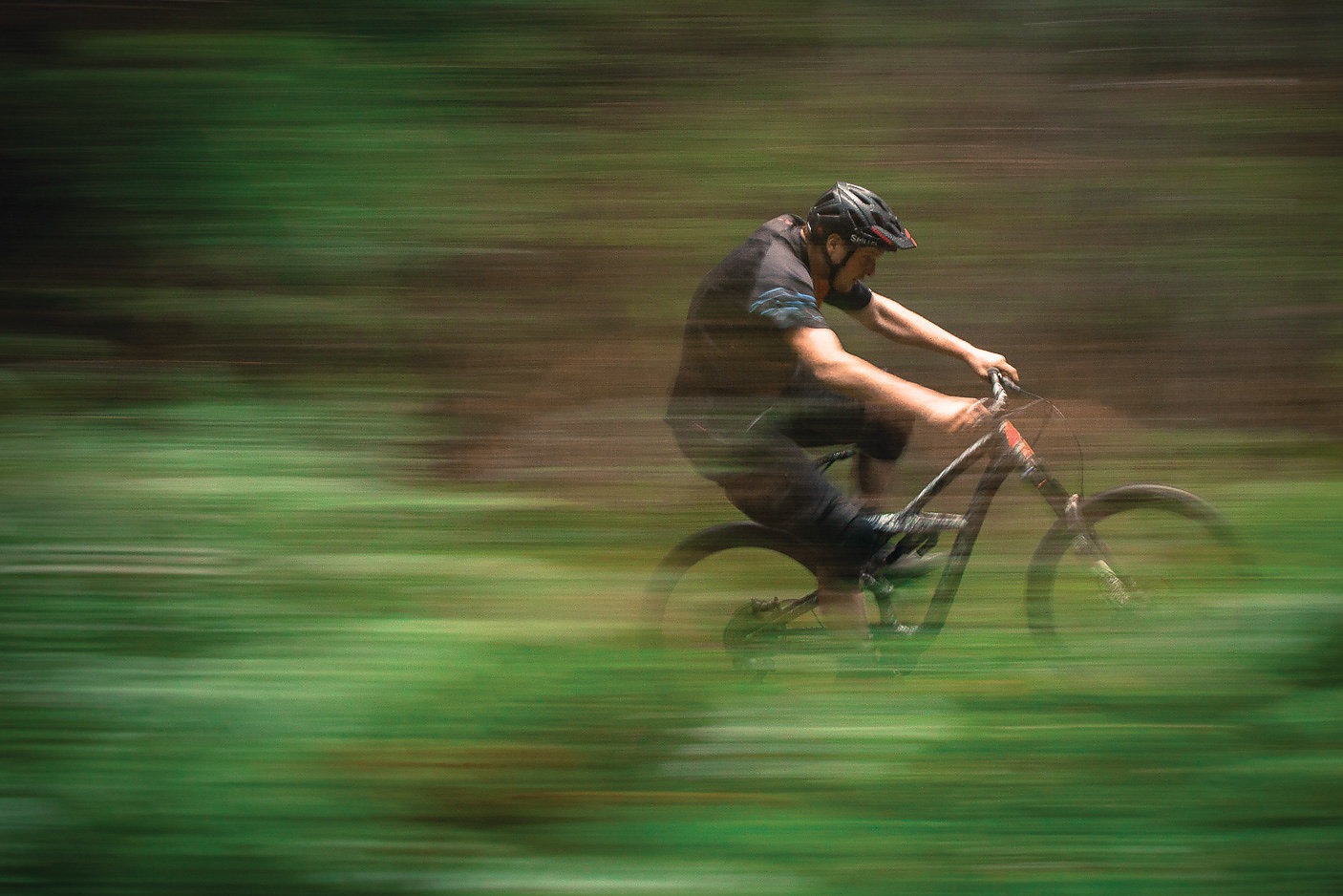
Forest of Progression - Old Growth Culture Meets New Age Riding
The remote forests of British Columbia’s Sunshine Coast have always been unique.
Stretching more than 100 miles along the eastern shores of the Strait of Georgia, the coast and its towering old growth is inaccessible from the greater mainland. To the north and south, it’s cut off by Desolation and Howe sounds; to the east, blocked by the rugged wall of the Coastal Mountains.
And yet, despite their remoteness, for centuries those vibrant forests—and the Coast’s namesake 281 annual days of sun—have drawn whole populations and industries. First, it was the cedar totem poles and canoes of the local Squamish (Skwxwú7mesh), Sechelt (Shíshálh), and Sliammon (Tla’Amin) First Nations. Next, the lonely trappers and fur traders of the Hudson’s Bay Company’s glory days. Finally, the waves of ravenous loggers arrived, changing the face of the landscape and spotting the shorelines with communities that survive to this day.
More recently, a new surge of humanity has come ashore—or, rather, rolled ashore. The towns dotting the coast are full of dense woodlands, rich cultural and historical sites, West Coast characters, and now an ever-expanding network of mountain bike trails that are earning attention worldwide. From Gibson to Roberts Creek, Sechelt to Porpoise or Powell River, a new culture is growing among the thick forests of the Sunshine Coast, all just a ferry ride (or two) away.
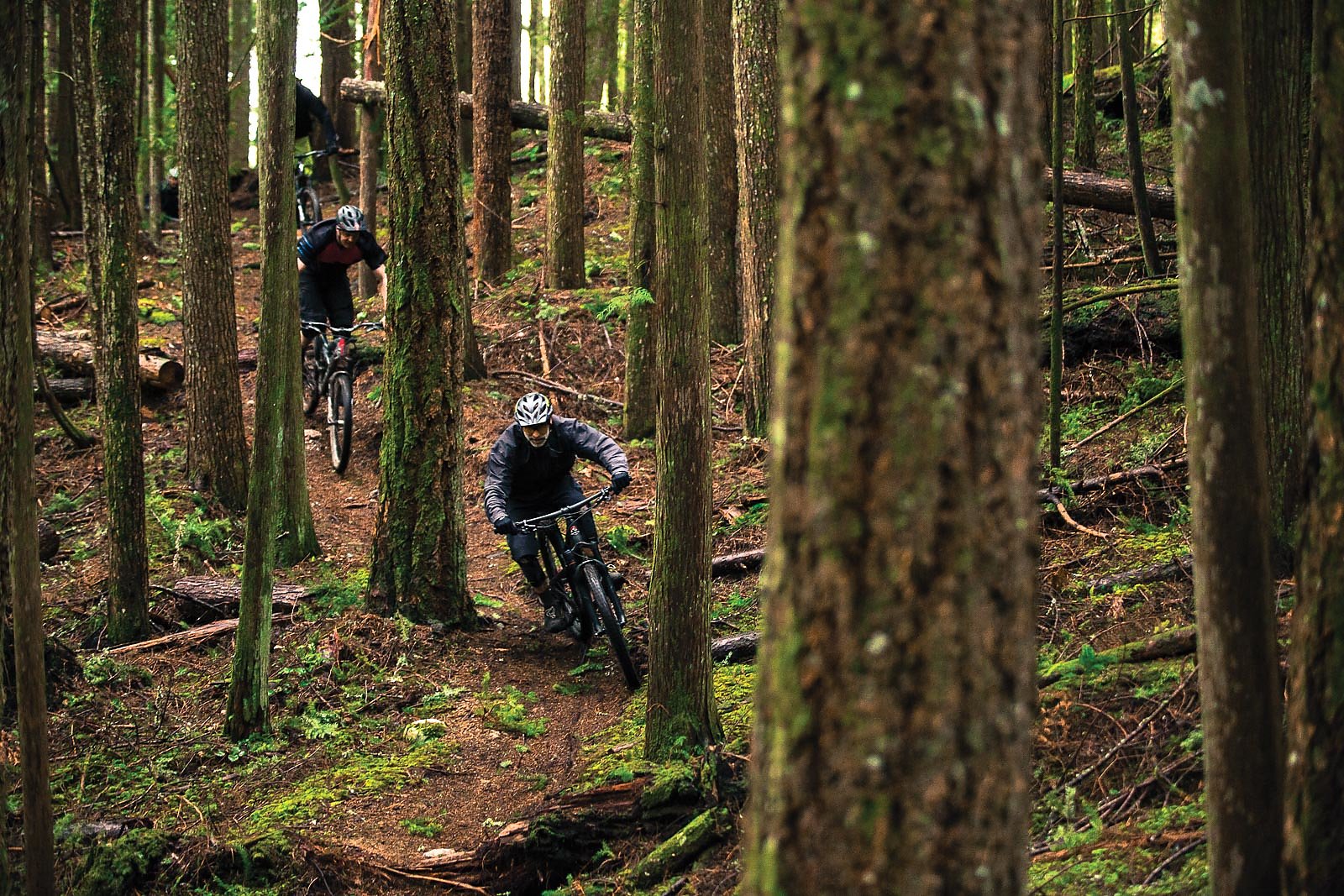
While interest in the Sunshine Coast from the outside mountain bike scene may be relatively new, the trails are not—in fact, some of the originals date back to World War I, when a group of conscientious objectors knocked in a path to access a clandestine agricultural community behind Robert’s Creek. The route become known as the “Wagon Trail,” and the village would help set the quirky and communal tone for modern communities in the area. The 1950s would see an even more prolific group, crews of shake block cutters who knocked in pathways all over nearby Mount Elphinstone. They were in search of burned cedar trees from a forest fire in the 1800s, and in their pursuit left behind a network of trails.
Born from WWI-era hippies and salvage wood cutters in the first half of the 20th century, in the 1980s these pathways—and others like them—would serve as the backbone of the Sunshine Coast’s first “mountain bike trails.” Local kids began pointing their rigid aluminum frames down old footpaths, turning former logging zones like the B&K area trails near Robert’s Creek into popular riding centers. With trails like Cunning Stunts, Mach Chicken and Red Baron, what started in the 20s has since drawn riders from the mainland for almost three decades, looking to join the area’s grassroots, community-driven races and events.
The growth of the local mountain bike scene didn’t just happen in the woods. In 1990, schoolteacher Doug Detwiller introduced his Sprockids program to the local school system. Sprockids helps youth develop life skills, values and strategies through mountain biking, and has been so successful that it’s now in 17 countries worldwide. And it’s for more than kids, as Doug explains, by introducing children to the sport, the program engages parents, encouraging them to get on bikes as well.
“What it created was a multigenerational cycling community,” he says, “where all ages contributed and shared the same love and passion for the sport and for the lifestyle that goes with it.”

An example of that resulting community is the Sprockids Bike Park, located on the Lower Sunshine Coast in the town of Gibsons. The park now boasts 27 trails, most of which have been built and maintained by participants of Sprockids. And it’s a truly multigenerational endeavor—Capilano University, in the nearby town of Sechelt, actually has a Mountain Bike Operations Program, and graduates of the program have added their own trails to the bike park network.
"The next generation of riders have stepped up and are creating new trails and facilities. They are continuing to grow the sport but with their own unique style.”
-Doug Detwiller
Parents and college kids aside, Doug believes the younger generation is their most powerful advocacy group.
“Today, many of the original riders and trail builders are still very involved,” he says, “but the next generation of riders have stepped up and are creating new trails and facilities. They are continuing to grow the sport but with their own unique style.”
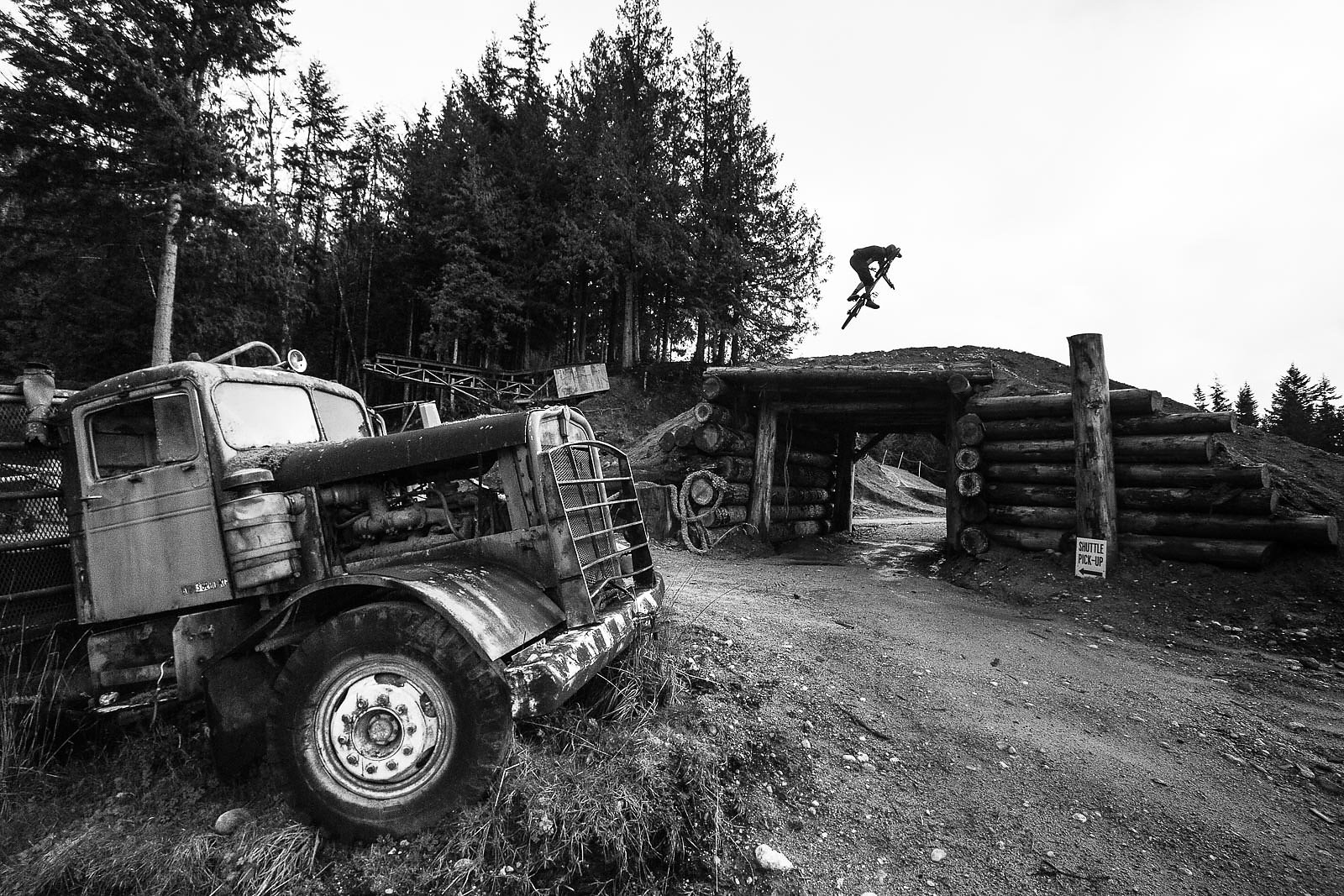
Years before they broke into the world of professional freeriding and started one of the most unconventional bike parks in the world, Curtis Robinson and Dylan Dunkerton were both Sprockids. After traveling the world, their home remained such a part of their identity that they, along with pro freerider Kyle Norbraten, adopted the moniker “The Coastal Crew” (although they have since parted ways with Norbraten). Under that title, they produced multiple video segments, feature-length films and freeride-specific trails. But it was in 2014 that they’d officially stake their claim on the coast’s sunny shores.
Having grown up enjoying year-round riding, Robinson, Dunkerton and Norbraten hatched a plan for riders to capitalize on the coast’s mild weather, huge forests and all-time dirt. The result was Coast Gravity Park (CGP), 160 acres of gravity-fed trails in the hills above Porpoise Bay, made up of 12 downhill trails with access to more than 14,600 feet of singletrack. With the relaxed, backyard feel that characterizes the Sunshine Coast, the park operates out of a fifth-wheel trailer and shuttles riders via a Unimog, and in the winter a giant firepit blazes to keep the chill away. Among the immensity of the coast, the park has become a destination in its own right—and a testament to the effectiveness of the Sprockids program and the level of riding the Sunshine Coast has to offer.
“I think the future’s pretty bright for the whole cycling community on the coast,” Dylan says. “The CGP has been a big influence, of course, but I think just having everybody coming here is really putting the coast on the map. It’s growing, and that’s pretty cool.”
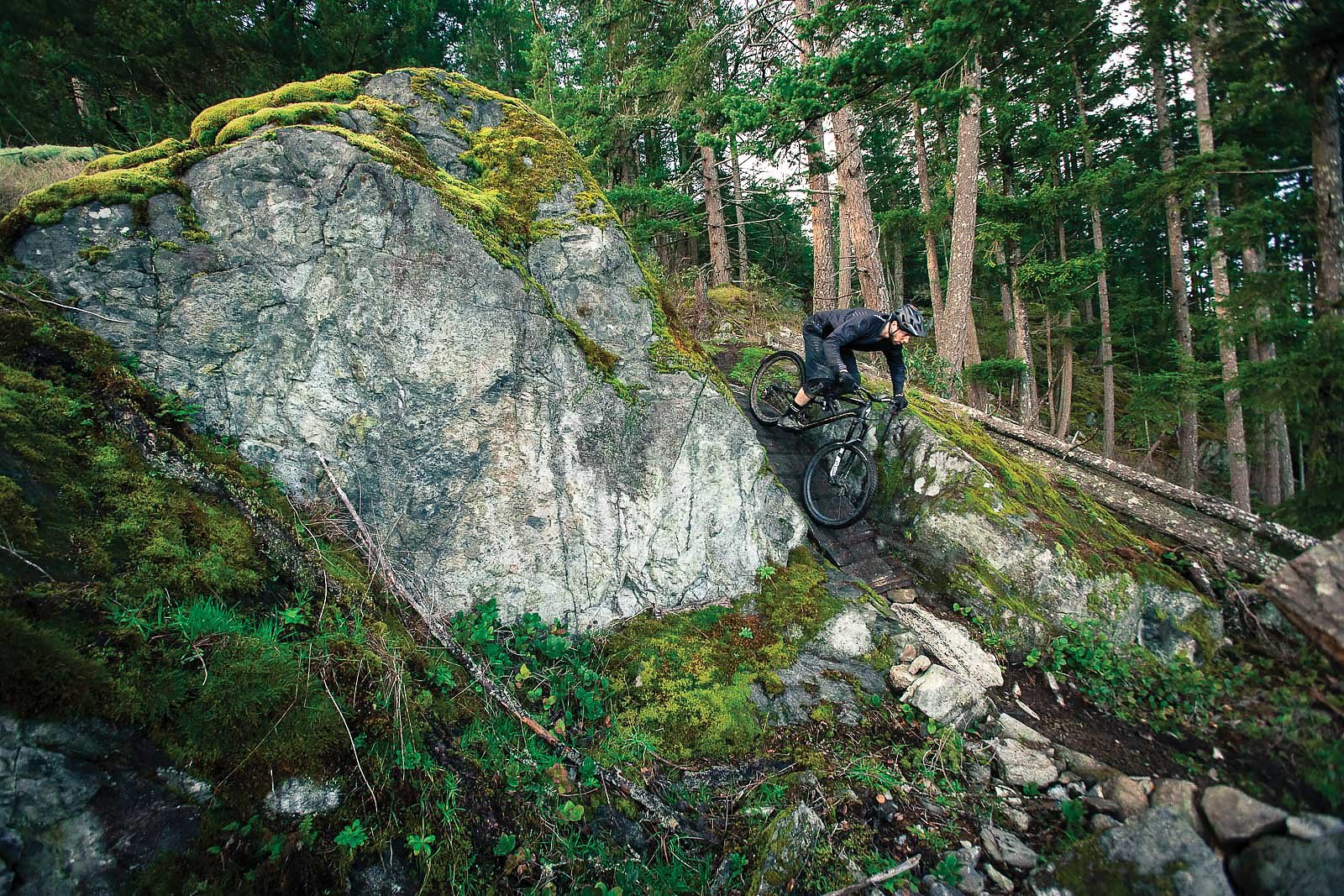
While many of the original trails in the area may have started with logging, the relationship between mountain bikers and timber companies hasn’t always been cordial. But six miles away from Coast Gravity Park, in the nearby town of Sechelt, is a relationship that offers a promising glimpse into these groups’ potential futures. The Sunshine Coast Community Forest (SCCF) is the entity that manages logging in the surrounding area—in the same forest that is laced by an impressive web of trails. Instead of battling the bikers, however, the SCCF contracts with local builders to resurrect or redirect trails impacted by timber harvesting.
The most recent of these saved trails was Frogger, originally built in 2002. From the beginning it was an unsanctioned trail, meaning the Community Forest had no obligation to save it. Instead of burying it in slash and yarder tracks, SCCF took a different approach.
“Rather than destroy it,” says Kris Sneddon, professional mountain biker and lifelong resident of Sechelt who managed the rebuilt project, “the Coast Community Forest funded the rebuilding of Frogger, simply because it was the right thing to do for our community.”
And it was not just a rebuild. Now Frogger is better than ever—twice as long as the original and without a nasty fire-road climb to link the singletrack in the area.

Farther north and another ferry ride away, Powell River has seen a surge in trail building—and user group cooperation—that rivals the efforts of the Coastal Crew. As it often does, intentional trail building started with local hikers, more specifically the Bloody Old Men’s Brigade, known as the BOMB squad. The local mountain bike builders, called the Chain Gang, began helping maintain (and ride) the BOMB squad’s trails, and then eventually started building their own. Now the Chain Gang logs an average of 2,500 volunteer hours annually, often working alongside the BOMB squad in an unusual wedding of user groups. The resulting trails, called the Duck Lake network, is one of the premier riding spots on the Sunshine Coast.
The two groups’ devotion to careful craftsmanship and community involvement is perhaps best represented in the Aloha Trail, completed in 2014 and named after a couple visiting from Hawaii who helped dig. The 2,000-foot stretch of singletrack required 1,300 volunteer hours to build, and includes both the beautiful “Aloha Bridge” as well as a fully functioning, self-service tiki bar on the other side. It’s a perfect spot for a mid-ride rest—or to blow by with just a glance, because the trail is just too damn fun to stop and take a break.
Like Sechelt, the mountain bikers of Powell River are also benefitting from a strong relationship with their local logging community. The town is home to one of the most progressive urban bike parks on the West Coast, thanks primarily to funding from the Community Forest. Designed by Alpine Bike Parks, the park contains jumps, ramps, wall rides, boxes, lifts, lips, landings and transitions, along with two pump tracks, including the first-ever poured concrete track in North America.

Wayne Brewer, a retired lawyer turned trail-building fanatic, remembers when the BC Bike Race first started visiting the town in 2010. Not long after, he says, a wave of younger folks began to arrive in both Powell River and the Lower Coast in general—not just to visit, but to put down roots.
"We’re also building trails to make Powell River the kind of place people want to come and visit and live. And they’re coming to do just that.”
- Wayne Brewer
“We’re building trails for ourselves, of course,” Wayne says. “But we’re also building trails to make Powell River the kind of place people want to come and visit and live. And they’re coming to do just that.”
The hordes of families who now populate the Powell River bike park on a sunny Sunday represent that flood of new residents, from toddlers on run-bikes to teenagers on dirt jumpers to the parents doing their best to keep up.
“People are getting stoked on biking, and, most of all, families are getting stoked on biking,” says Dylan of CGP. “It’s growing into a sport where everybody can go out with their wives or husbands or kids, their girlfriends or boyfriends or anybody, and go have a good time.”
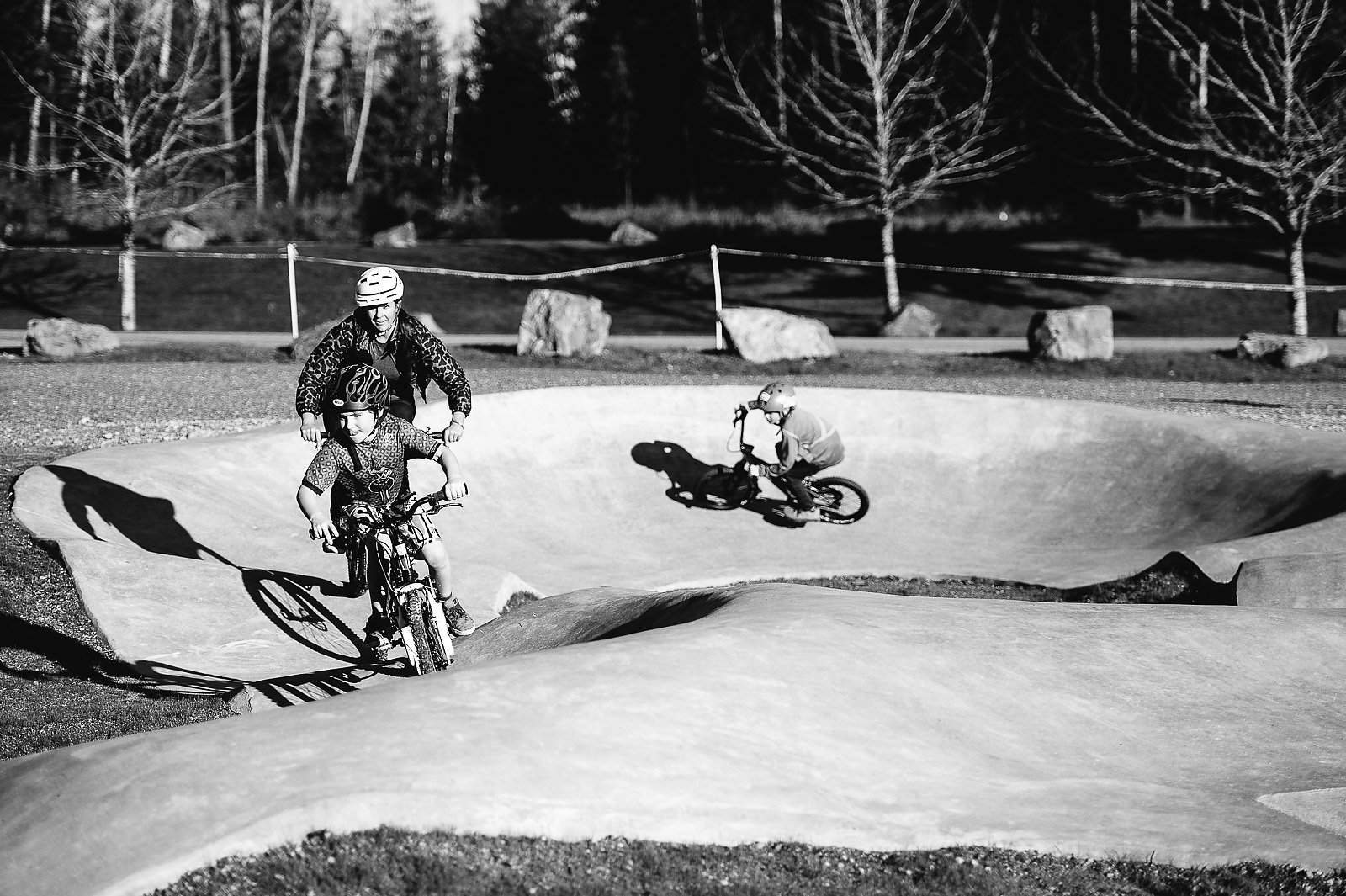
It’s a movement that is supported by nearly everyone on the Sunshine Coast, from retired mill workers to active foresters and outdoor enthusiasts. The coast’s scattered villages are proof of what a little cooperation (mixed with a lot of sweat, work and forward thinking) can accomplish, not just for the current generation, but for those to come as well.
“The community’s growing on two wheels, which is great,” CGP’s Curtis Robinson says. “Lots of kids are getting involved. They’re realizing there’s more to do than hang out at the soccer field or skate park, and we’re trying to facilitate their needs and show them we’re living in the best place in the world for riding bikes.”
And while carbon frames and strider bikes may be a far cry from totem poles, crosscut saws and secret, peace-loving farming communities, they’re all based around the same forests that have drawn people for generations. For when you invest in the soil, the trees grow stronger than ever.
“As Curtis and I got older, the momentum just kept picking up,” Dylan says. “It’s something we fell in love with at an early age, thanks to those good influences, and now it’s all just slowly starting to snowball. More and more people are discovering this quiet little place has some of the best mountain biking the coast of BC can offer.”
